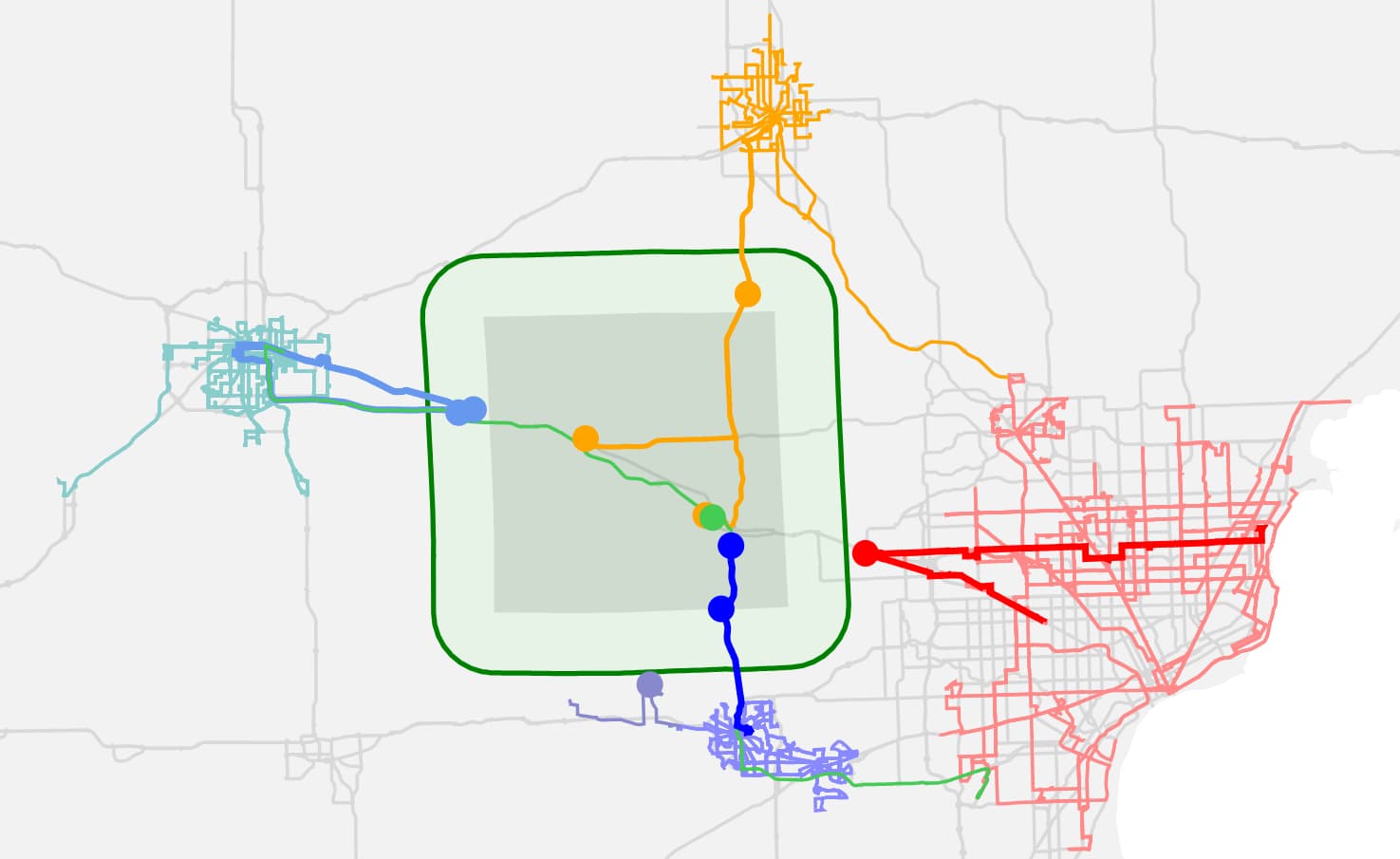A look at regional transit in Livingston County
This article was also published as a guest column on the Livingston Post
Regional transit is a more important issue for Livingston County than you might think. To understand why, you must understand these two facts:
- The majority of Livingston County is employed outside of Livingston County
- Livingston County has the 2nd longest average commute times, at 32 minutes, in the state of Michigan
This means that without good regional transit, if you don't have access to a car, you are locked out of most of the kinds of jobs that Livingston County residents work at.
(Statistics regarding where Livingston County residents work come from the OnTheMap US Census website. I am using data from 2021, based on primary jobs. I will be referencing this data multiple times in this article.)
LETS, the transportation provider within Livingston County, primarily focuses on transportation within Livingston County. Our lives do not end at county lines though, so what are the options if you work outside of the county (or have to go outside of the county for other reasons)?
The five-mile-zone
While LETS mainly serves people who want to get around within the county, they do have a five mile zone around the county where they will take you for an additional $5. This fact is not mentioned on their website, primarily because one of the stipulations of this zone is that you really shouldn't use it outside the hours of 8 AM to 4 PM. You can go a little bit past the county line outside of those hours, but if you're going to be pulling out the Google Maps measure distance tool and measuring out to 5 miles past the line, you will very likely have your ride canceled if it falls outside of those hours.
Here's what this zone looks like on a map:

The zone includes places like Fenton, New Hudson, South Lyon, Webberville, and Milford, and covers an additional 5.9% of workers living in Livingston county.
Flint
While only 0.8% of workers living in Livingston County (including myself) actually work in Flint, the transit provider of Flint, MTA Flint, runs buses regularly into both Howell and Brighton. All of the routes stop in Fenton at the Silver Lake Rd. Park & Ride by request, and they are working on adding a stop to Hartland. The primary purpose of these routes is to transport Flint residents to various factory jobs around Livingston county, representing an important part of the county's economy, but you can use them for any purpose you want to.
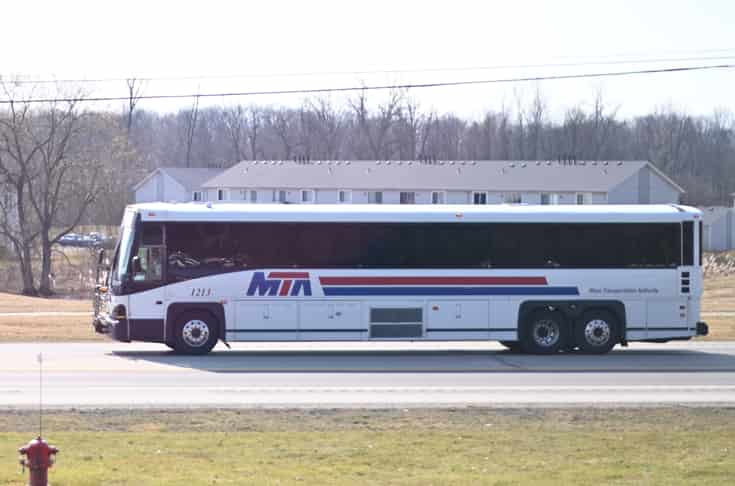
Here is a map, with MTA's routes into Livingston County in red, and the rest of their routes in orange:

Ann Arbor
Ann Arbor is the city with the most amount of Livingston residents working there, with 8.8% of workers from Livingston County working there. It also has a problem with too many cars, which is why their public transit provider, TheRide, is proposing to alleviate this problem through the use of public transit, and in the past even a rail link has been proposed. There are options that exist today to get you to Ann Arbor, though!
Michigan Flyer
The Michigan Flyer is technically a bus to the Detroit airport. It starts at Lansing, goes through Brighton and Ann Arbor, before ending at the airport. However, you can get on in Brighton and get off in Ann Arbor. Unfortunately, it costs $15 per trip, which is not surprising considering it is the only public transportation service within the county that is run by a for-profit company.
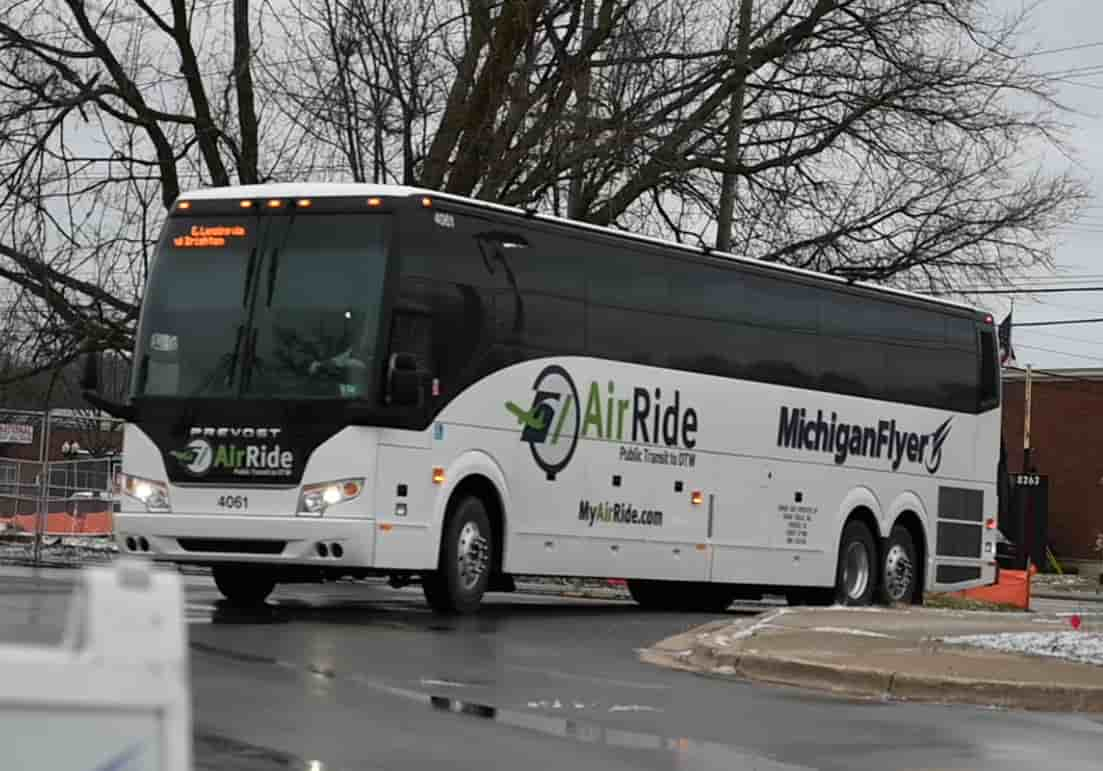
Did you know that Indian Trails, the company that runs this service, also receives subsidies from the state? They receive subsidies, charge expensive fares, and pocket the difference. Public transportation should be publicly owned, especially if it receives public money. It really is no surprise that the most expensive service on this list happens to be the one run by a for-profit company. It's still better than many other bus companies, but I want to see this kind of service be publicly-owned.
People's Express
While People's Express is primarily a dial-a-ride service, they do offer a commuter route to the U of M Hospital in Ann Arbor from the Lee Rd. Park & Ride as well as the 8 Mile Road Park & Ride. The fare for this service is much more reasonable, but the hours of operation are limited, and if you work somewhere that isn't the hospital, you have to take another bus. This isn't too big of a problem though because unlike most other cities in southeast Michigan, Ann Arbor actually has frequent buses (whoa!)
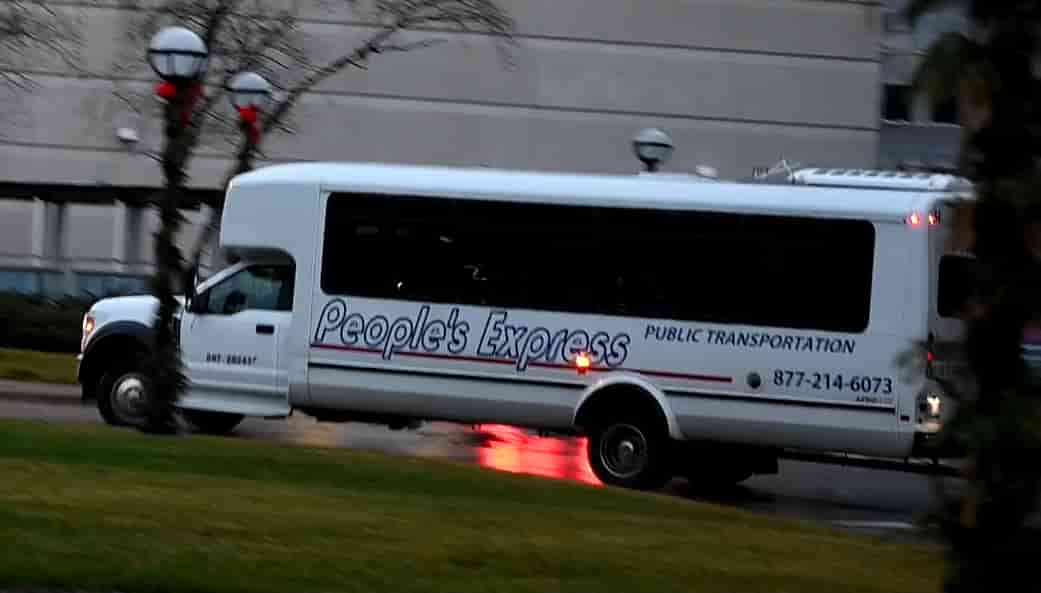
WAVE
The Western-Washtenaw Area Value Express is a great service for people who live in Chelsea or Dexter, and it's a great example of how low population is not an excuse to not have fixed bus routes. Their Community Connector route connects Dexter, Chelsea, and Ann Arbor together. However, it is not a good option for Livingston County residents to get to Ann Arbor, unless you want to walk a mile and a half through the middle of nowhere. This is because the closest stop of this service to the county is a solid mile and a half outside LETS's service area, in Dexter.
Map
Here is a map, with the Michigan Flyer in green, the People's Express in dark blue, and TheRide as well as the WAVE in light blue:

Lansing
1.9% of workers from Livingston County work in Lansing.
CATA's Webberville Service
The Capital Area Transportation Authority runs one bus, the 48 Williamston-Webberville Ltd in each direction per day, on weekdays, from Webberville into Lansing. One bus arrives in Lansing at 8 AM each morning, and one bus leaves Lansing at 5 PM each evening. While Webberville is outside of Livingston County, it does fall within LETS's service area, and is listed in their mobile app as “Webberville CATA Stop-Library”.
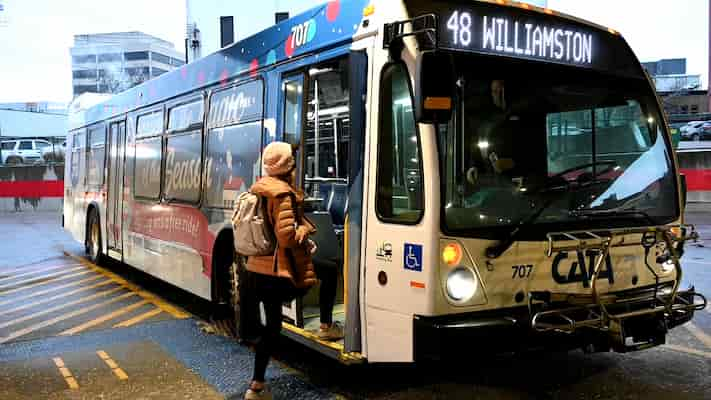
Michigan Flyer
Michigan Flyer's buses also run to East Lansing, but the schedule isn't quite as good as going to Ann Arbor, and the cost is still a lot. If you want to get to Lansing itself, you'll have to take another bus, which is also pretty frequent.
Map
This map includes the Michigan Flyer in green, and CATA's services in blue.

Detroit and its suburbs
Every city I've listed so far has some viable option for commuters.
Not this one. No matter which option you take, if you want to go anywhere near Detroit, you're going to have a really bad time. This is an unacceptable situation.
35.4% of workers from Livingston County work in Oakland and Wayne counties. This includes 3.4% in Novi, 3.3% in Farmington Hills, 3.2% in Livonia, 2.1% in Southfield, 2.0% in Wixom, 1.8% in Detroit, and many others scattered around the area.
If you want to go to Detroit itself, the best option is to go to Ann Arbor, and then take the D2A2 bus over. It takes about two hours, and you can expect to pay anywhere between $11.50 and $25 each way if you add up all of the different buses.
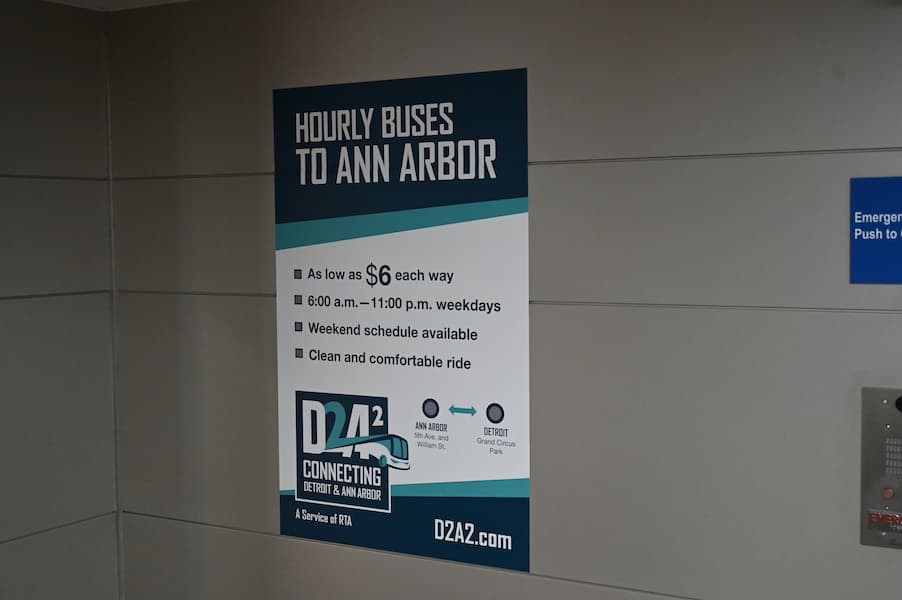
For the above-mentioned suburbs however? Unless you happen to live in Green Oak Township, anyone who doesn't have access to a car can forget about getting a job there. The state of regional transportation to this entire area is a roadblock that limits the job opportunities people have.
SMART is the regional public transit provider of Wayne, Oakland, and Macomb counties. In September of 2023, they expanded two of their bus routes, the 305 Grand River and 740 Twelve Mile Crosstown, west into Wixom:
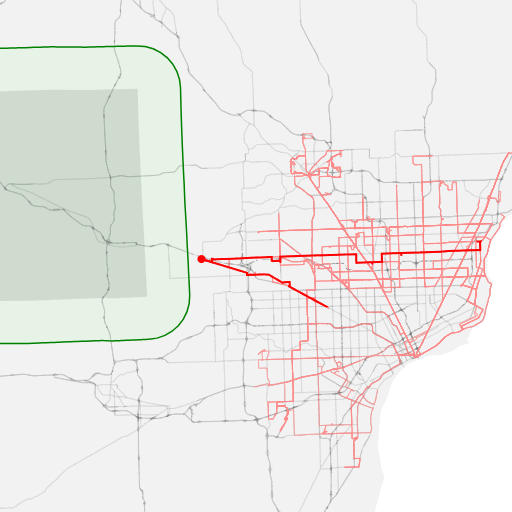
Approximately 5.5% of workers from Livingston County work within half a mile of these two bus lines. Their western endpoints are... so close to touching LETS's service area. Only a 1.8 mile gap separates the two. If one side or the other worked to close that gap, it would represent a huge opportunity. Of course, if you're crazy enough, like I am, you can try to cross this gap on foot, but it really isn't a viable commuting option. If you do try it though, watch out for this trap of a sidewalk at Lyon Oaks Drive:
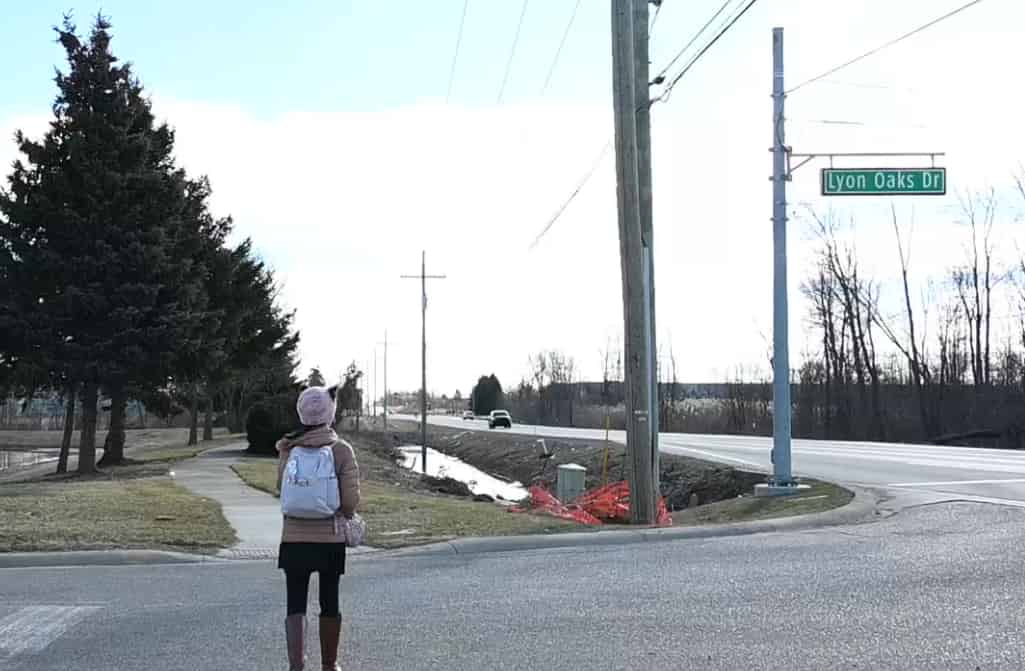
That stream between the sidewalk and the road cuts the sidewalk off 300 feet later, and you'll have to turn around. Ask me how I know. The sidewalks are also quite spotty. But even if you're willing to make that walk, going out to the edge of the five-mile-zone is only really allowed between 8 AM and 4 PM. So this really isn't a viable commute.
Full map
(Click on the image for full size)
Conclusion
Flint, Ann Arbor, and Lansing all have somewhat viable options for commuters from Livingston County to get there via public transportation. However, if you want to go anywhere near Detroit, that's just not going to happen. All four cities need a lot of work in terms of transit connections though.
Regional transit is important because our lives don't end at county lines. When the majority of workers living in Livingston County work outside of the county, the public transit system being ill-equipped to handle this reality is simply unacceptable. Even for people who can drive, this is still important. There is nothing fun about being forced to spend hours of your life behind the wheel, staring at brake lights. Wouldn't you like to actually be able to do what you want to with that time instead? Cars are also a huge money sink, with insurance, maintenance, repair, and gas costs going into them. Improving public transit allows people to go from being a 3-car household to a 2-car household, or go from a 2-car household to a 1-car household, and save a lot of money in the process. And that's what this really is about: Making Livingston County a more livable, affordable place.
